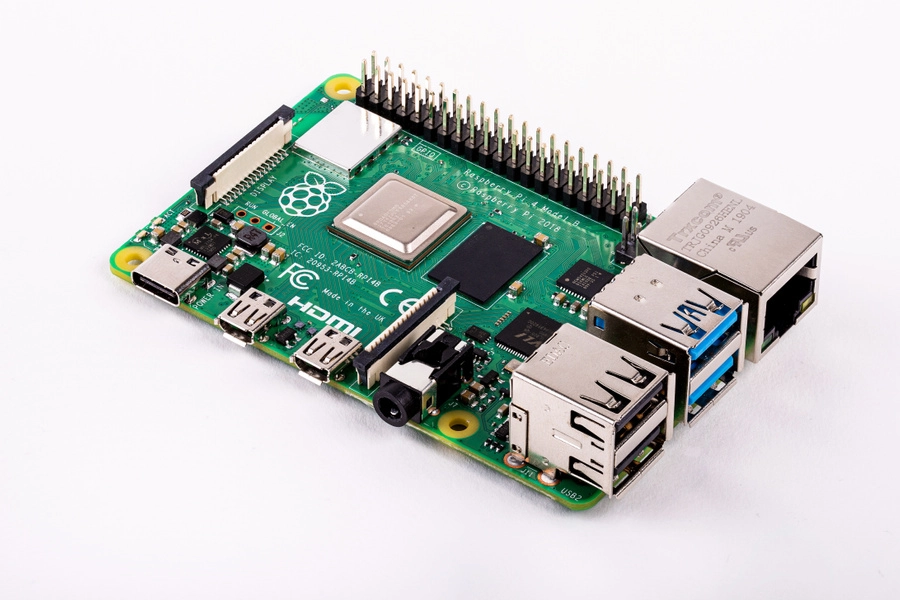¶ Introduction

Raspberry Pi is a tiny and affordable computer (known in the computing world as a single board computer or SBC) designed to put the power of computing and digital creation in the hands of many. It's designed for hobbyists, technologists, tinkerers, and those who want to learn how computers work. The learning process starts as soon as you open the box - in addition to purchasing the Raspberry Pi board itself, your first step is then assembling it with some accessories, and then installing the operating system.
Endless OS is available for installation on Raspberry Pi. Once installed, it includes all the usual Endless OS features and functionality, along with a large selection of applications. However, it is released as a preview version, due to some limitations detailed below.
As a preview release, we especially welcome community feedback regarding interest in using Endless OS on this hardware, particularly in which contexts these devices are used, what works well, and what needs to be improved.
¶ Requirements
You will need a Raspberry Pi 4 Model B with at least 2GB RAM, or a Raspberry Pi 400. While the OS may boot on the 1GB edition, we expect that it would work poorly with this limited amount of RAM.
You will also need an SD card that can hold the uncompressed image you choose to install (16GB for the base image, 32GB for the English variant). For a better experience, we recommend using a fast SD card (Class 10 or faster). All data on this SD card will be erased during installation.
¶ Limitations
- Hardware-accelerated graphics are present since EOS-5.1, but we are aware of some visual corruption issues, for example when playing videos in the Chromium web browser.
- No hardware-accelerated video decoding yet; videos may not play back smoothly.
- Analog audio is not supported yet.
- On Raspberry Pi 400, Wi-Fi is not supported out of the box.
¶ Download
The latest Endless OS image for Raspberry Pi 4 can be found on our Direct Download page.
¶ Installation
After downloading the image as above, you must now use another computer in order to flash it to a SD card. If you are not familiar with the process of image flashing, please refer to our instructions for flashing with GNOME Disks or balenaEtcher.
¶ Booting into Endless OS
After setting up the SD card as explained above, you can now use Endless OS as follows:
- Power off or unplug your Raspberry Pi 4 or 400.
- Insert the flashed SD card into the SD card slot
- Power on
¶ Technical notes
¶ Mainline Linux kernel
Most operating system distributions for Raspberry Pi 4 use a version of Linux that is maintained by the Raspberry Pi Foundation in order to have comprehensive support for the device. However, in order to minimize the engineering workload needed to support Raspberry Pi 4 as well as the many other computer products we work with, Endless OS sticks with the official, unmodified version of Linux (sometimes referred to as "mainline") for all of our efforts.
Mainline support for Raspberry Pi 4 is incomplete, but advancing rapidly thanks to the work of the Linux community. That is the main reason for the limitations above. We do expect these to be resolved over time, in the same way that (e.g.) the mainline support for Raspberry Pi 3 is now complete.
¶ USB boot
The instructions above are for SD card boot. However, we've confirmed that it's now possible to boot Raspberry Pi 4 from USB. You just need to ensure a recent (September 2020 or newer) version of the firmware is flashed on your RPi4's EEPROM chip.
The easiest way to flash this is to use the official Raspberry Pi Imager to to create a SD card with the latest "Raspberry Pi 4 EEPROM boot recovery" image. Booting this SD card should let you upgrade the EEPROM firmware. For more info, see the official RPi USB boot documentation.
At this point you can then remove the SD card, and follow the instructions above to flash Endless to any USB disk, and then connect it to the RPi4 for booting.
¶ u-boot bootloader
Endless OS is built on ostree and needs special bootloader involvement in order to boot up. Endless developer Jian-Hong Pan explains this in detail in his presentation A Journey to boot Linux on Raspberry Pi.